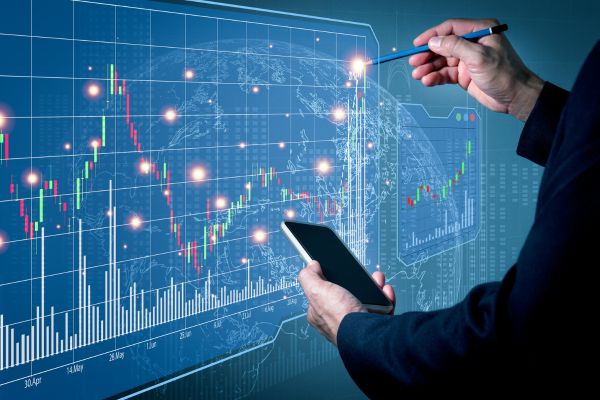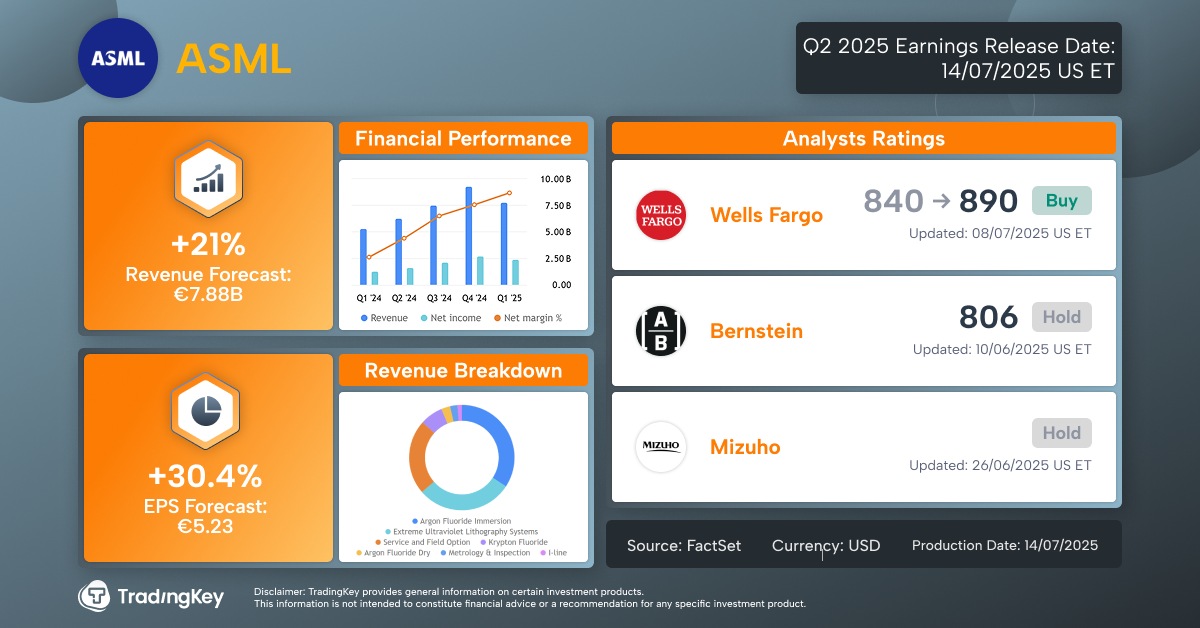Tim Cook Isn’t Going Anywhere Soon, But an Apple Shake-Up Looms

The departure of Apple’s chief operating officer is just the beginning of a broader management overhaul — though Tim Cook is staying put for the foreseeable future. Also: The company is scaling back the iOS 26 Liquid Glass revamp; a look at upcoming devices; and Meta poaches Apple’s top AI models executive.
Apple shares dropped 1.4% in morning trading on Monday.
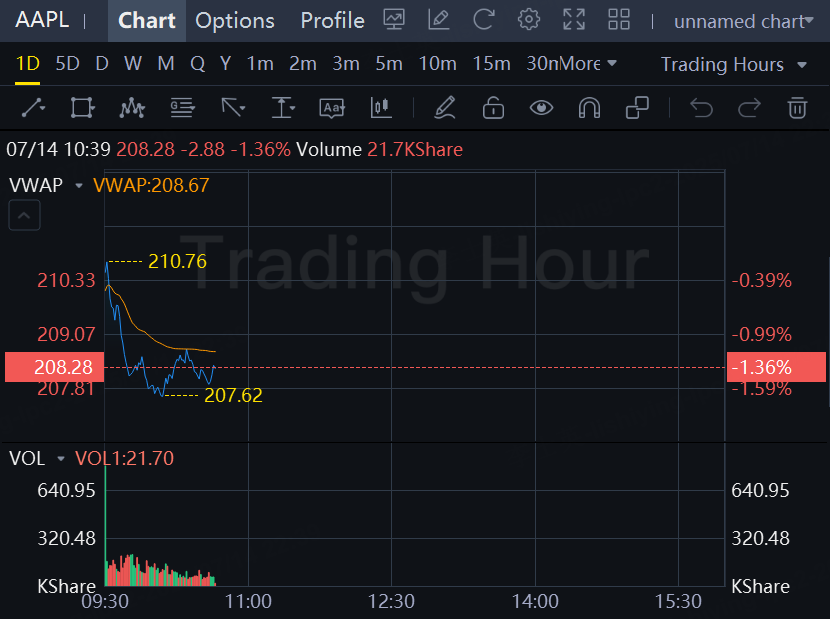
Last time in Power On: Apple should sell a smart ring to expand its fitness wearables lineup.
The Starters
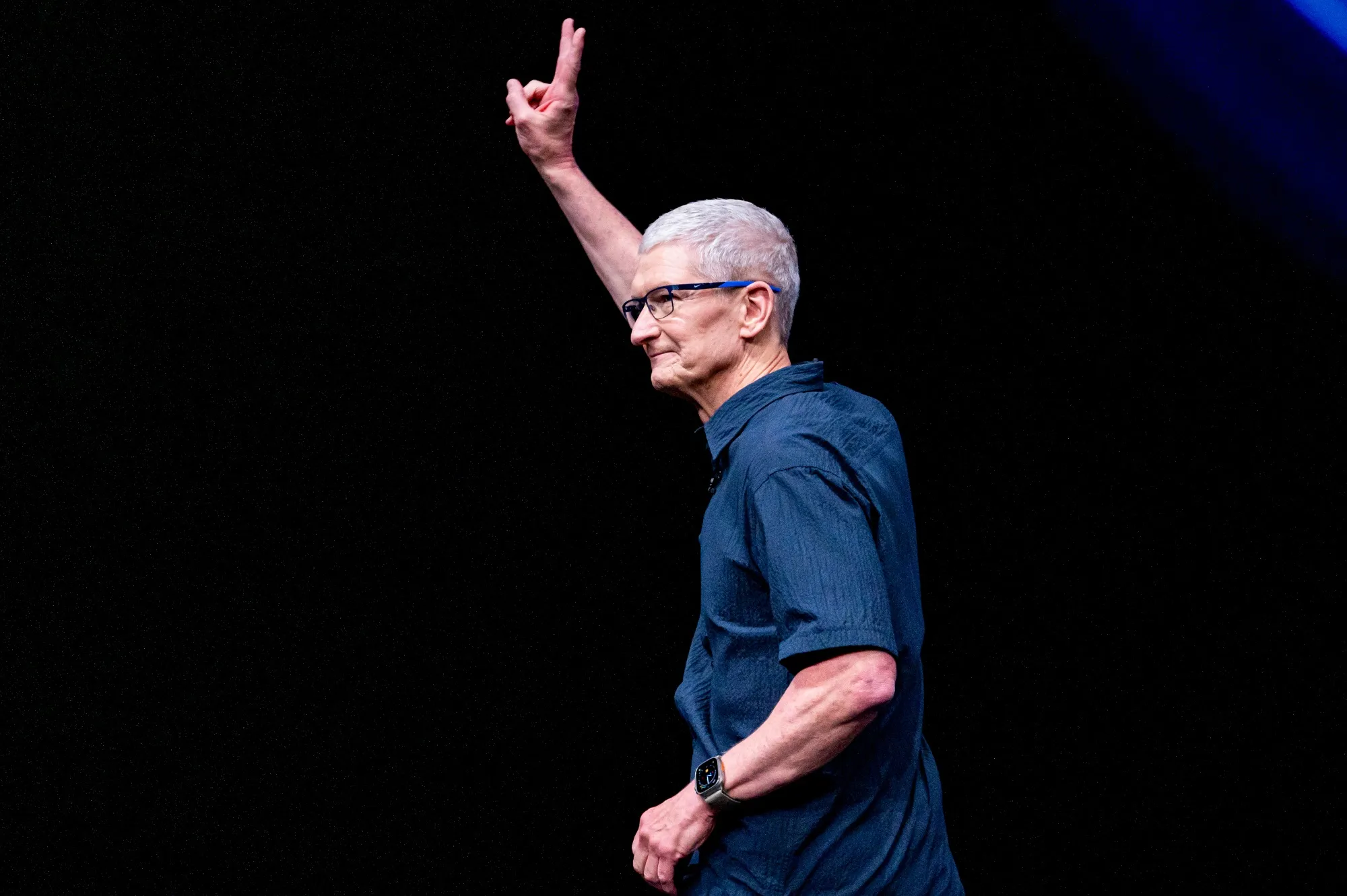 Tim Cook is likely to stay in charge of Apple for years.
Tim Cook is likely to stay in charge of Apple for years.
Whether or not you think Apple Inc. Chief Executive Officer Tim Cook should step aside, the reality is clear: He’s probably not leaving anytime soon.
Despite being mired in Apple’s biggest crisis in years — its artificial intelligence debacle — Cook has earned staying power akin to other captains of industry. Think of Bob Iger, the 74-year-old CEO of Walt Disney Co., or Jamie Dimon, the 69-year-old leader of JPMorgan Chase & Co. Though Cook turns 65 in November, there’s a likely scenario in which he remains in charge of the iPhone maker for at least another half-decade.
Jeff Williams, Cook’s longtime No. 2, just announced plans to retire later this year. That means there’s no immediate successor ready to take the helm. There also haven’t been signs internally that Cook is getting ready to leave or begin the process of grooming a replacement.
Moreover, the board doesn’t feel the need to make a change. Apple’s directors are Cook loyalists like Arthur Levinson, Susan Wagner and Ronald Sugar. They’ve largely let him run the business without interference. Like most public company CEOs, Cook is judged primarily on Apple’s stock performance. While shares are down 16% this year, they’ve surged about 1,500% since he became CEO in 2011.
When Apple co-founder Steve Jobs passed away that year, the company could have entered a turbulent era. Instead, Cook retained many of Jobs’ top lieutenants, spearheaded the shift to larger iPhones, expanded aggressively into China, and introduced new product lines like the Apple Watch and AirPods. He also pushed Apple into subscription services, building a new recurring revenue engine.
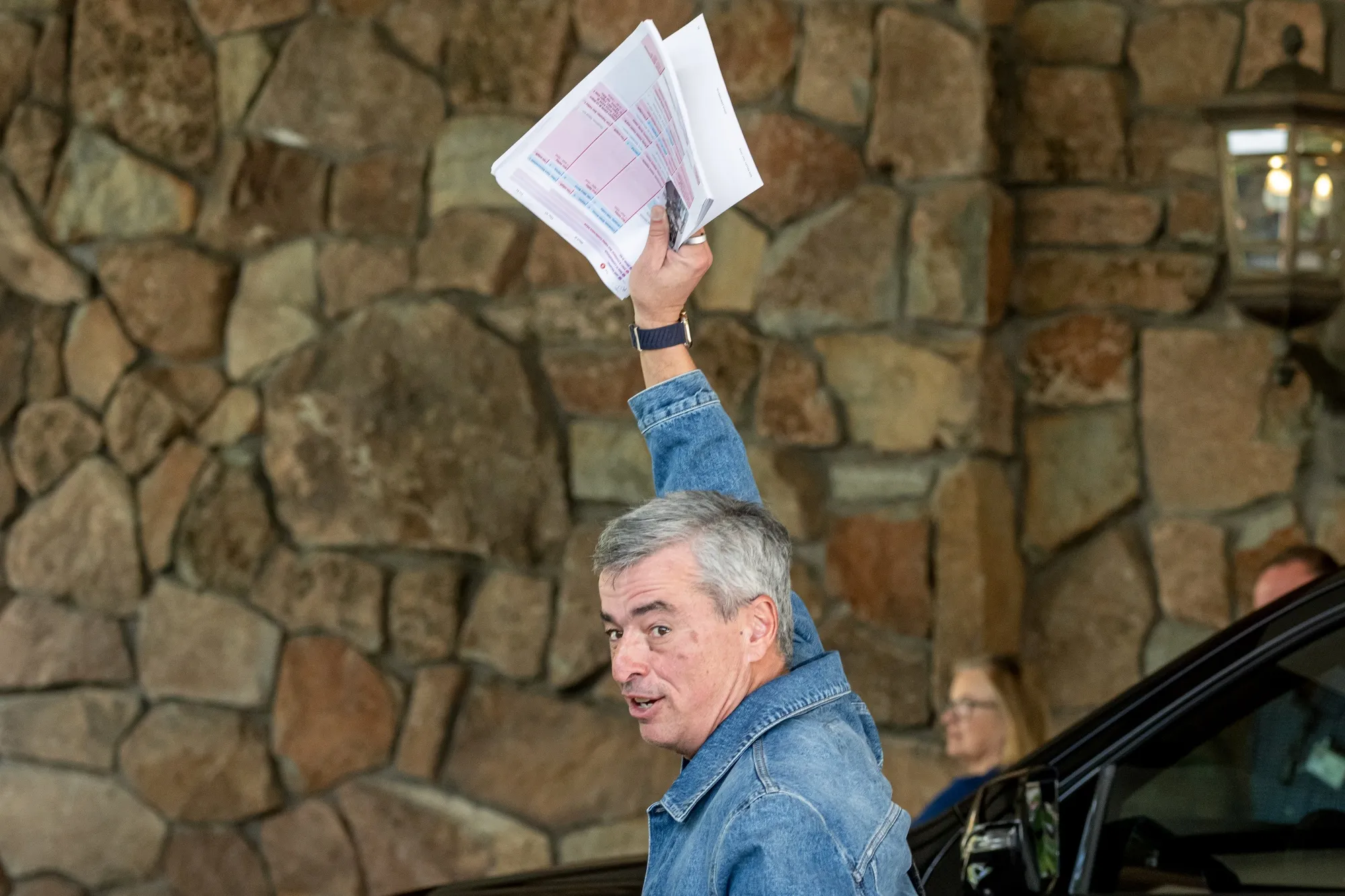 Eddy Cue, Apple’s senior vice president of services, has sounded the alarm about the company’s struggles.
Eddy Cue, Apple’s senior vice president of services, has sounded the alarm about the company’s struggles.
There’s no question Cook bears responsibility for Apple’s current struggles. That includes the company’s AI missteps, an aging product lineup, the erosion of its design-focused culture, a decade-long drought of breakthrough mainstream hardware, and its growing tensions with developers and regulators. But there’s also no question that the board still sees him as the only person capable of turning things around.
Put simply: No crisis is big enough to shake the board’s faith in Cook. In fact, his influence may grow further. Levinson, Apple’s longtime chairman, has already surpassed the company’s recommended board retirement age. So it wouldn’t be surprising to see Cook eventually step into that role himself, as Iger, Dimon, Microsoft Corp.’s Satya Nadella and Cisco Systems Inc.’s Chuck Robbins have done at their companies. That would give Cook an even tighter grip on the iPhone maker.
That said, there is recognition among Apple’s most senior decision-makers that something needs to change. Services chief Eddy Cue, one of Cook’s most trusted advisers, has warned internally — and even publicly — that Apple risks becoming the next BlackBerry or Nokia if it doesn’t adapt quickly.
Over the past two years, I’ve reported that Apple has been preparing for a broad management shake-up. And now it’s beginning to happen. Williams will be replaced by operations executive Sabih Khan, and longtime Chief Financial Officer Luca Maestri handed the reins to Kevan Parekh in January. Dan Riccio, another Tim Cook direct report, left at the end of last year.
One reason to expect a sweeping overhaul of management: Many of Apple’s top executives are in their 60s. They’ve made hundreds of millions of dollars apiece, and the CEO role isn’t available. For a lot of them, it’s nearing time to retire.
Roughly half of Cook’s about 20 direct reports are at least 60 and could depart within the next few or so years, including marketing head Greg Joswiak (approaching his 40th Apple anniversary), App Store chief Phil Schiller (first started at Apple in 1987), environment executive Lisa Jackson and chip czar Johny Srouji.
Add in the pending exits of Maestri (whose current role is mostly transitional) and Williams (who will be out of the building by December), continued uncertainty around AI leader John Giannandrea, and Khan only being slightly younger than Williams, and you’re looking at Apple’s biggest leadership turnover in decades.
The moment is ripe for a reset. The heat Apple is taking over its AI performance and sluggish innovation gives the company cover to reshuffle the org chart and corporate strategy in ways it might not have dared to before.
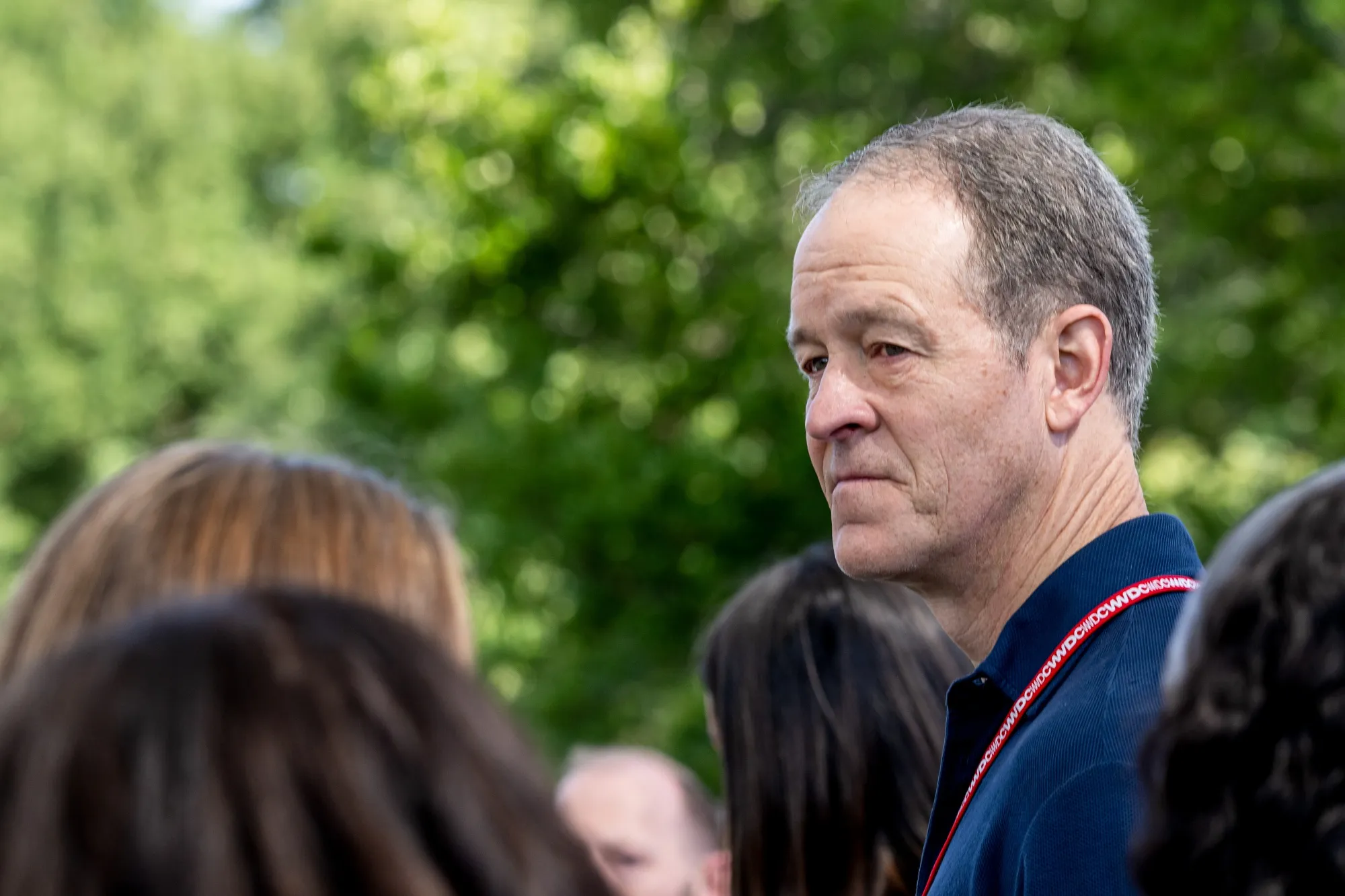 Jeff Williams, Apple’s chief operating officer, will see his responsibilities spread out across the company upon retirement.
Jeff Williams, Apple’s chief operating officer, will see his responsibilities spread out across the company upon retirement.
As I’ve reported, Apple needs to spend real money to bring in outside talent — and that likely means acquiring a leading AI startup. It has already kicked the tires on Perplexity and will seriously consider Mistral, especially given the struggles within Apple’s AI models team. This would be a shift for a company that has never spent more than $3 billion on a corporate takeover.
The Williams departure also sets the stage for further changes. Already, Apple has broken up its Vision Pro team, moving the pieces into its software and hardware departments. It also relocated the engineering for the Siri digital assistant and robotics teams. Now that it has to divvy up Williams’ duties, Apple will continue shuffling the deck.
Here’s the working plan for spreading out Williams’ responsibilities:
Apple has already said that its design team will now report directly to Cook. But, organizationally, this isn’t so simple. Williams has several senior design leaders reporting to him, and Apple will likely consolidate those teams under Alan Dye (vice president of human interface) and Molly Anderson (vice president of industrial design) — with both reporting to Cook. This isn’t an entirely new idea. Apple historians may recall that the design team previously reported to Cook from 2015 to 2017.
Development of the Apple Watch and health-related hardware also technically fell under Williams’ purview. But in reality, that work shifted to hardware engineering chief John Ternus about three years ago. So while Apple continued to say Williams oversaw those efforts, nothing will change there in practice.
Apple’s watchOS team, run by David Clark, and its health software engineering group, led by Evan Doll, will move to software engineering head Craig Federighi’s organization. The current, unfinalized plan is for the health product team led by Dr. Sumbul Desai to shift under Craig Federighi’s oversight.
Fitness+, a subscription service led by Jay Blahnik, will undoubtedly move to Apple’s services group, which already includes subscriptions like TV+, music streaming and iCloud.
The AppleCare team, run by Farrel Farhoudi, will likely move to Khan’s new COO organization.
Apple’s Greater China group, led by Isabel Ge Mahe, has a unique reporting structure that answers to both Cook and Williams. This arrangement will likely carry over to Khan as well.
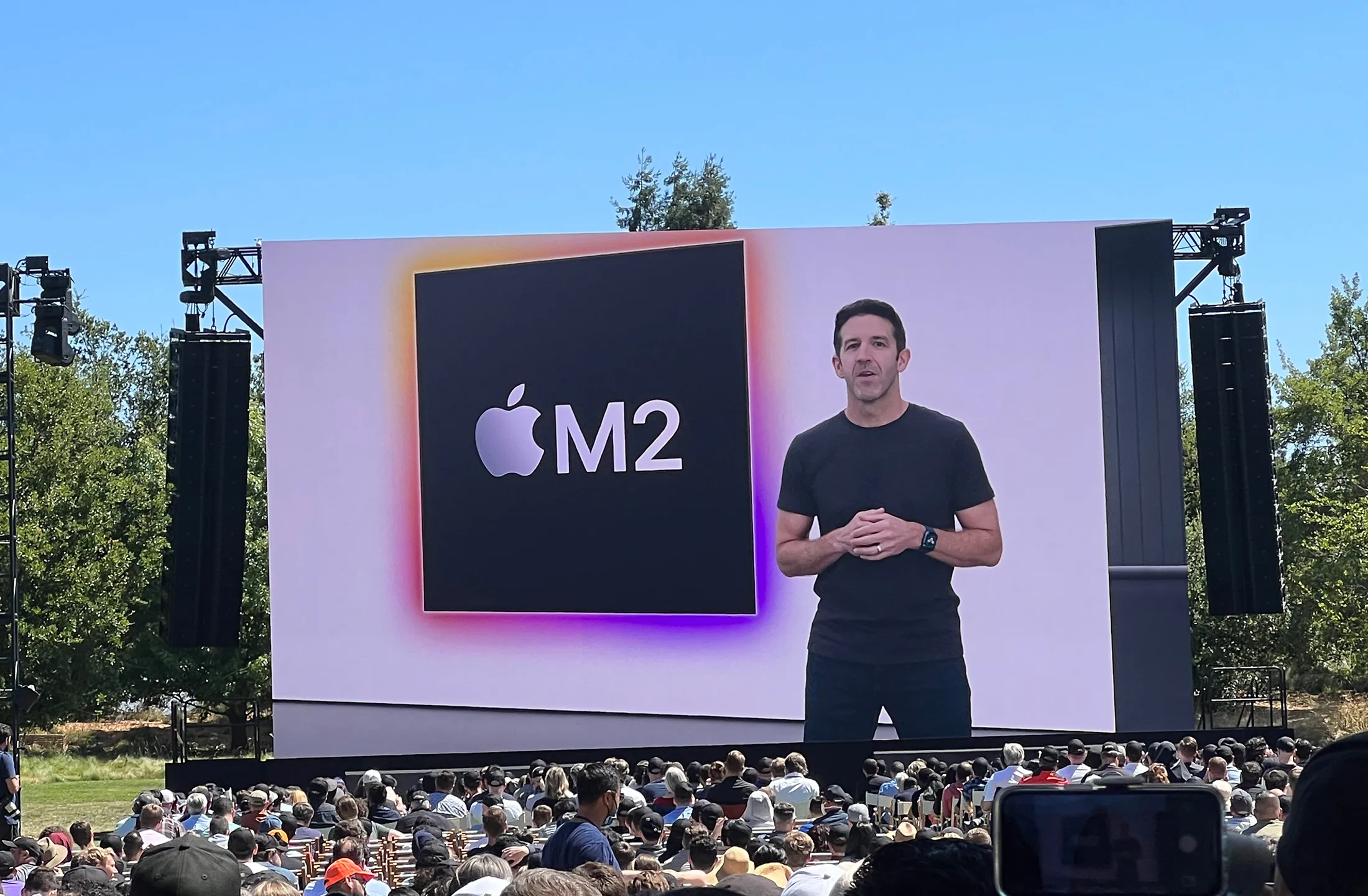 John Ternus, Apple’s senior vice president for hardware engineering, is a likely long-term successor to Cook as CEO.
John Ternus, Apple’s senior vice president for hardware engineering, is a likely long-term successor to Cook as CEO.
One lingering concern: the lack of a quick CEO replacement in case of emergency. Apple — like any company — must prepare for the “stepped off the wrong curb” scenario.
In the case of Williams, the executive has been both Apple’s COO and the clear No. 2 to Cook. While Khan will hold the COO title, the new role doesn’t make him heir apparent. He doesn’t have the experience of Williams, who had also overseen design, health technology and the Apple Watch. Khan — whose day-to-day role probably won’t even change much as COO — has less of the know-how that could make him Apple’s CEO at a moment’s notice.
If something were to happen, Apple would probably initially be run by committee — whether that’s Apple’s leadership team as a whole or a smaller group made up of the likes of Khan, Parekh, and Deirdre O’Brien, a 35-year Apple veteran who has held key roles in operations, HR, and retail, and is one of Cook’s closest confidantes. In the long term, the most plausible successor remains Ternus.
The hardware chief makes sense for a number of reasons. For one, Ternus is about 15 years younger than Cook. That means that even if Cook didn’t step down for five more years, Ternus would likely still have at least a decade at the helm. He also has the seemingly necessary history of having been at Apple for more than 20 years.
And while some who’ve worked with him may dispute the label, Ternus would arguably qualify as a “product-focused CEO” — a trait many Apple watchers believe should define Cook’s successor. That said, his financial and operational experience is limited. He’d likely need to lean heavily on a strong CFO and COO.
The bigger question is whether a Ternus-led Apple would feel like more of the same — a continuation of Cook’s era, not a break from it. Ultimately, while Cook will eventually make his recommendation, it’s up to the majority of the board to decide who fills his shoes.
The boldest play would be to acquire a major AI company and then groom that CEO as Cook’s successor. But let’s be honest: That’s not going to happen.
The Bench
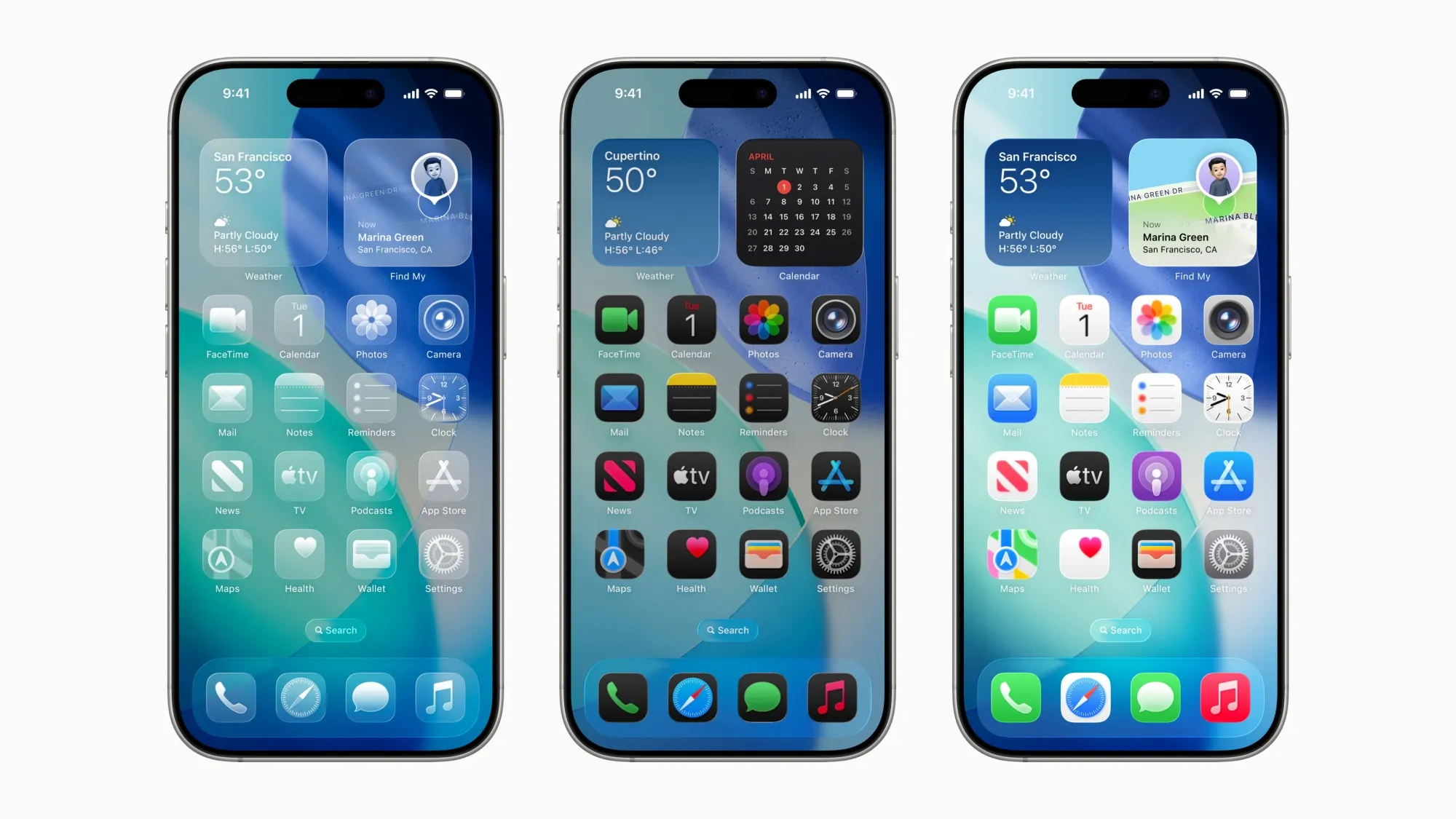 The iOS 26 home screen customization options.
The iOS 26 home screen customization options.
Apple selects X as its new user interface design team. Whether or not you like the Liquid Glass user interface in iOS 26, macOS 26 Tahoe and Apple’s other latest operating systems, one thing is clear: It was a bold new look and offered a fresh take on software design. For a company that hasn’t taken many design risks in recent years, it represented a daring overhaul.
When Apple introduced iOS 26, it showed off glass-like effects across menus, navigation bars and backgrounds throughout the system. That dramatic, transparent style was prominent in Apple’s marketing materials and clearly present in the first two beta versions. But in the third beta released this past week, Apple made a notable shift — dialing back the Liquid Glass effect in several parts of the interface.
While performance and battery concerns may have played a role, it’s hard to ignore the influence of social media feedback. The change appears to be a response in part to criticism from users on platforms like X and YouTube. After spending three years developing this new design, Apple scaled it back within weeks based on early reactions from the internet.
I’m not saying Apple’s first take on Liquid Glass was perfect (far from it), but it’s unsettling to see the company so quickly abandon a core visual idea. Instead of pulling back, Apple should adopt a slider system so users can choose how clear and prevalent they want the Liquid Glass effect to be.
Consider how Apple handled backlash to the Safari redesign during the iOS 15 beta cycle in 2021. Rather than scrapping the new interface, Apple responded by offering users a choice. Even now in iOS 26, Safari includes three distinct layout options. More broadly, Apple is allowing users to pick from four different icon styles — proving that customization is something that it believes in.
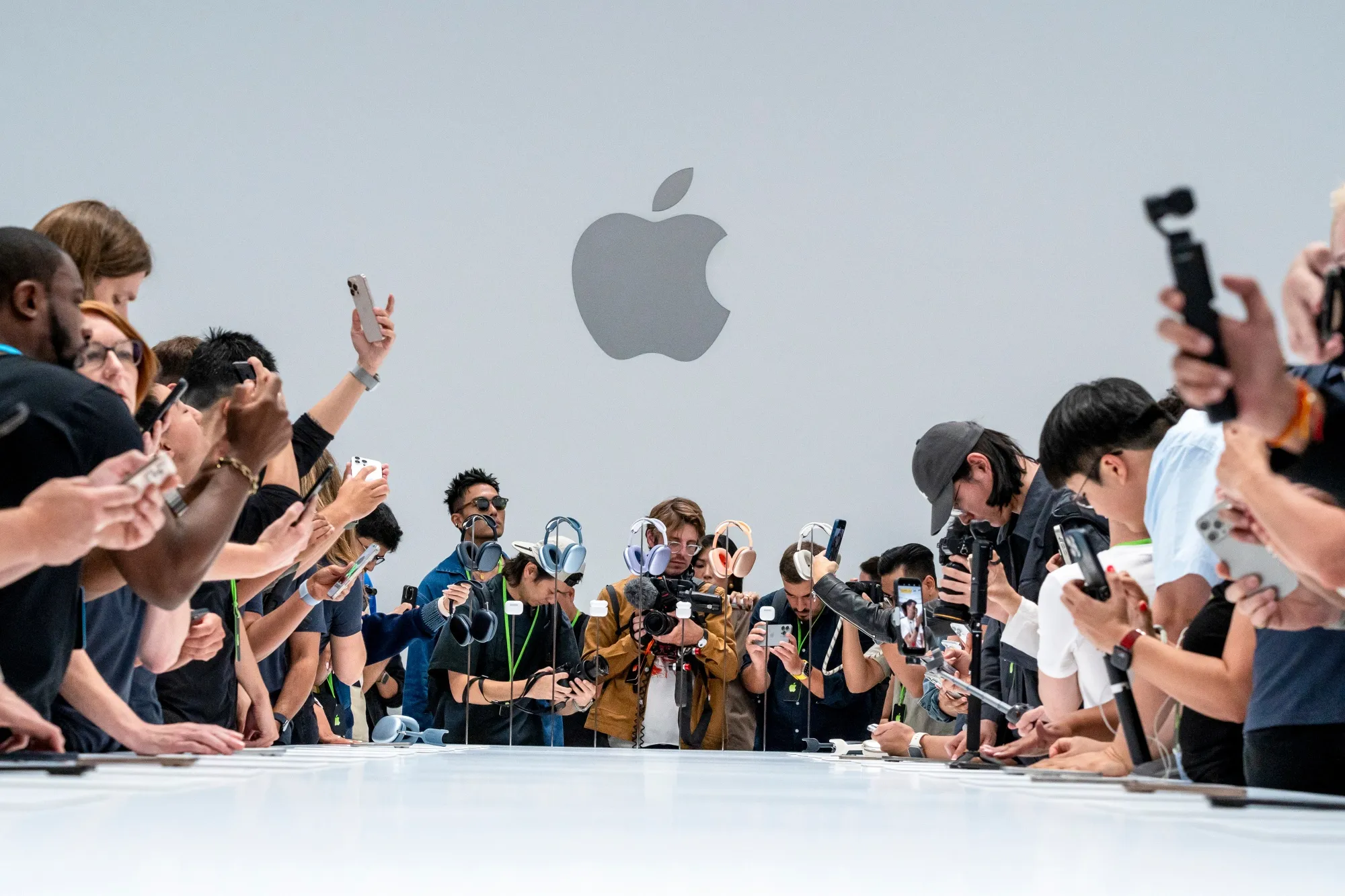 Attendees view new products during an event at the Apple Park campus in Cupertino, California.
Attendees view new products during an event at the Apple Park campus in Cupertino, California.
Here are all the major new Apple products on the way. Apple’s struggles in artificial intelligence, its succession conundrum and tariff-related headwinds aren’t getting in the way of a flood of new products slated for release over the next nine months. Things will kick off in earnest this fall with the usual suspects — new iPhones and Apple Watches — as well as some other odds and ends: updated M5 iPad Pros, a refreshed Vision Pro with an M4 chip, and potentially some accessories.
More action comes next year. As I reported this past week, here’s what’s on deck for the first half of 2026:
M5-based MacBook Pros in 14-inch and 16-inch sizes. Apple’s new high-end laptops usually roll out in the fall, but the company is considering a release during the early part of 2026. This could mirror the timing of the M2 Pro and M2 Max MacBook Pro launch in early 2023.
An iPhone 17e, indicating that Apple — at least for now — is locking into an annual release cadence for its “e” line. That’s a shift, considering the iPhone SE was only updated twice after its 2016 debut. Expect a near-identical design to the iPhone 16e, but with the A19 chip to match this year’s iPhone 17 lineup.
An entry-level iPad to replace the current $349 model.
New 11-inch and 13-inch iPad Air models that will trade in the M3 chip for the M4 processor.
A fresh Mac external monitor, the company’s first new model since the Apple Studio Display launched three years ago.
This product flurry mirrors the wave of launches seen in the first half of 2025. It’s a lot of new stuff, but make no mistake: These are just modest iterations on existing products. Few devices are being meaningfully redesigned. For the most part, we’re talking about swapping chips and bumping up specifications. The days of major annual hardware overhauls are still in the rearview mirror.
There could be an exception, though. Apple is still preparing a smart home display, vaulting it into a new category. But that product is now more than a year late by Apple’s own internal timeline. And even if it does launch, it would still trail similar products from Amazon.com Inc., Google and others by several years.
Roster Changes
 Meta CEO Mark Zuckerberg.
Meta CEO Mark Zuckerberg.
Apple is losing its foundation models chief to Meta in latest AI setback. The most in-demand employees at major tech companies right now are, unsurprisingly, elite AI researchers. That’s especially true for people who can build cutting-edge large language models — the foundation for generative AI.
That expertise is so sought-after that Meta Platforms Inc. CEO Mark Zuckerberg is handing out pay packages worth tens of millions of dollars a year to those he sees as the best in the field. He’s already brought in top names, including Scale AI co-founder Alexandr Wang and key talent from OpenAI, Anthropic and others.
This past week, Zuckerberg added another major hire: Ruoming Pang, the head of foundation models at Apple. To land him, Meta offered a multiyear compensation package that could reach well north of $200 million. That’s LeBron James money — but if Pang can accelerate Meta’s AI ambitions, it could be a bargain.
Some have asked me why Pang would be in such high demand, given Apple’s struggles to deliver compelling AI. But he’s among the most respected engineers in the space, and his work at Apple was limited by the company’s privacy policies and internal constraints — not by a lack of ability.
It’s too early to know how much this move will shift the AI landscape, but it’s clearly a major blow to Apple. The company tried to keep Pang with a counteroffer, but it wasn’t even close to what Meta put on the table.
Post Game Q&A
Q: When will Apple hold its iPhone 17 launch event?
A: The company usually unveils its new iPhones the week after Labor Day. If that holds — and there’s no reason to believe it won’t — you can pencil in the keynote for the week of Sept. 8. In the past, Apple has typically favored Tuesdays, but there have been some exceptions in recent years. So it could be that Monday (the 8th), though I suspect the 9th or 10th is probably more likely. Apple never holds events on Fridays, so you can rule out the 12th, and it has avoided launching new products on Sept. 11.
Q: Why was Apple’s smart home hub delayed?
A: This device — code-named J490 — was postponed because it made heavy use of the Siri features originally planned for iOS 18.4. Those capabilities (now delayed) would let the voice assistant tap into personal data to fulfill queries and take advantage of the information on a user’s screen. The hub also is dependent on a new version of App Intents, which would allow Siri to more precisely control applications and functions. The device is meant to be operated primarily via voice, something App Intents enables. At this point, I have little to no expectation that the product will arrive this year. Instead, I’d expect it in 2026 — around the same time the new Siri finally launches.
Q: Do you think the refresh to the Vision Pro will help sales?
A: No, not to any material degree. Putting in a newer chip in the same too-heavy design as the original model accomplishes little to nothing. In fact, I’m not even sold on the mixed-reality market having a successful future at all. Meta is selling decent headsets in this category for $500, and they haven’t taken the world by storm. With the Vision Pro costing seven times that amount, Apple is in a tough position. When augmented glasses finally arrive, the Vision Pro will only be remembered as a success if it ends up being a true stepping stone to that technology.
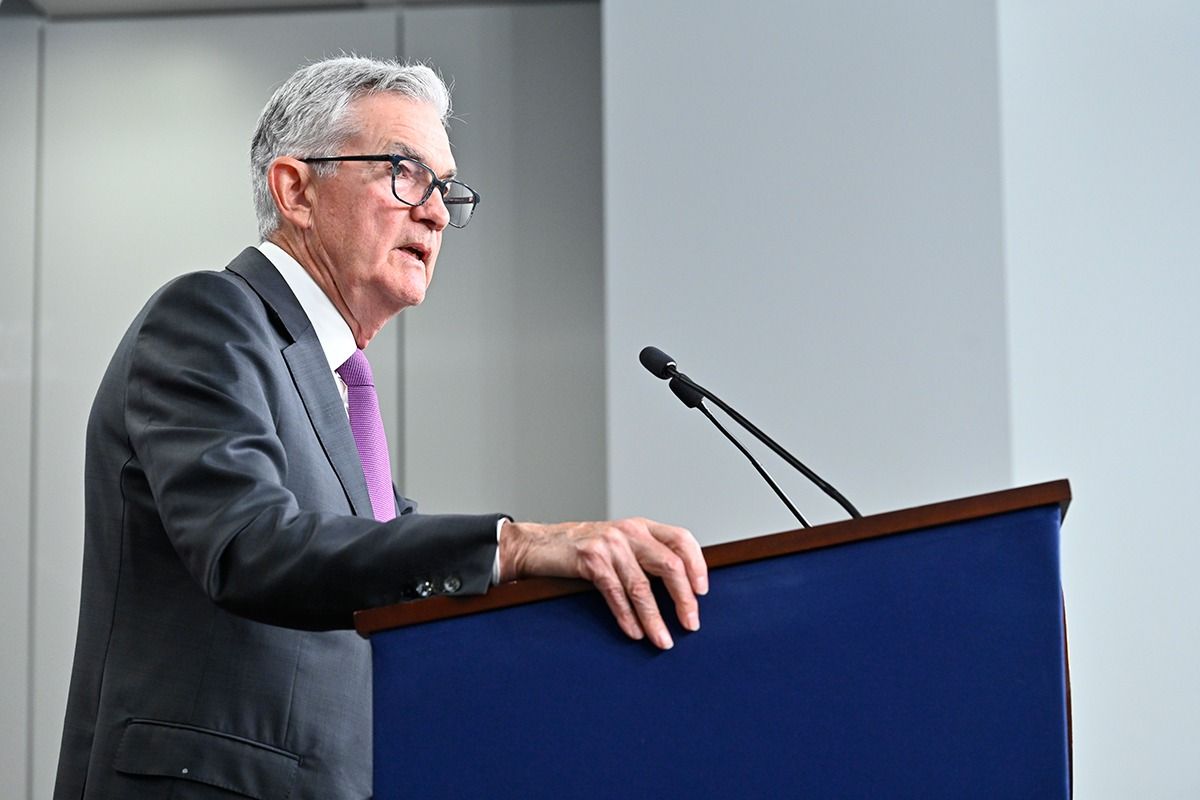

.jpg)
